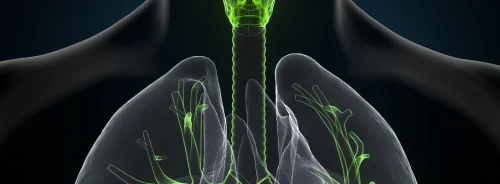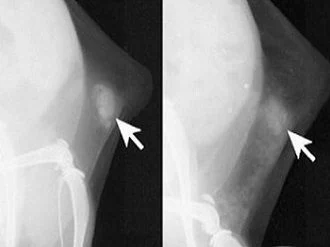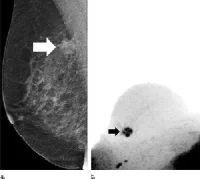Breast density reduces the accuracy of mammography when screening for breast cancer. Now a new mammogram procedure — already tested in pre-clinical studies of mice — could be more reliable in detecting breast cancer in women with dense mammary tissues, according to a new study published in the journal ACS Nano. The new technique involved injecting gold nanoparticles in mammary tissue to enhance the imaging of early signs of breast cancer.
Mammography remains the clinical gold standard of screening tests for detecting breast cancer. However, one problem with this x-ray procedure is that dense breast tissue shows up as white masses and fibres on an image, which can obscure the presence of microcalcifications — possible signs of early cancer development.
Other imaging methods including ultrasound, magnetic resonance imaging (MRI) and molecular breast imaging can also find abnormalities, but each has its own limitation, such as high cost or poor resolution. The new mammogram technique developed by researchers from Harper Cancer Research Institute, University of Notre Dame, Notre Dame, Indiana, could improve patients' options.
The research team enhanced the contrast of mammography x-rays by modifying gold nanoparticles with molecules that bind specifically to microcalcifications. They injected a low dose of these nanoparticles into the mammary glands of mice with dense tissue. The engineered particles made the microcalcifications brighter on the x-rays and, therefore, easier to distinguish. The mice showed no obvious side effects, according to the researchers.
Although further research would be required, the team says the technique could eventually translate into more reliable breast cancer detection for women with dense mammary tissue — which accounts for 45 percent of all women.
Source and image credit: American Chemical Society
Mammography remains the clinical gold standard of screening tests for detecting breast cancer. However, one problem with this x-ray procedure is that dense breast tissue shows up as white masses and fibres on an image, which can obscure the presence of microcalcifications — possible signs of early cancer development.
Other imaging methods including ultrasound, magnetic resonance imaging (MRI) and molecular breast imaging can also find abnormalities, but each has its own limitation, such as high cost or poor resolution. The new mammogram technique developed by researchers from Harper Cancer Research Institute, University of Notre Dame, Notre Dame, Indiana, could improve patients' options.
The research team enhanced the contrast of mammography x-rays by modifying gold nanoparticles with molecules that bind specifically to microcalcifications. They injected a low dose of these nanoparticles into the mammary glands of mice with dense tissue. The engineered particles made the microcalcifications brighter on the x-rays and, therefore, easier to distinguish. The mice showed no obvious side effects, according to the researchers.
Although further research would be required, the team says the technique could eventually translate into more reliable breast cancer detection for women with dense mammary tissue — which accounts for 45 percent of all women.
Source and image credit: American Chemical Society
References:
Cole LE, Gogola TV, Roeder RK (2015) Contrast-Enhanced X-ray Detection of Microcalcifications in Radiographically Dense Mammary Tissue Using Targeted Gold Nanoparticles. ACS Nano, August 26, 2015; 150831092910001
DOI: 10.1021/acsnano.5b02749
Latest Articles
healthmanagement, breast cancer, dense breasts, mammography, breast density, microcalcification
A new mammogram procedure — already tested in pre- clinical studies of mice — could be more reliable in detecting breast cancer in women with dense mammary tissues, according to a new study published in the journal ACS Nano.










